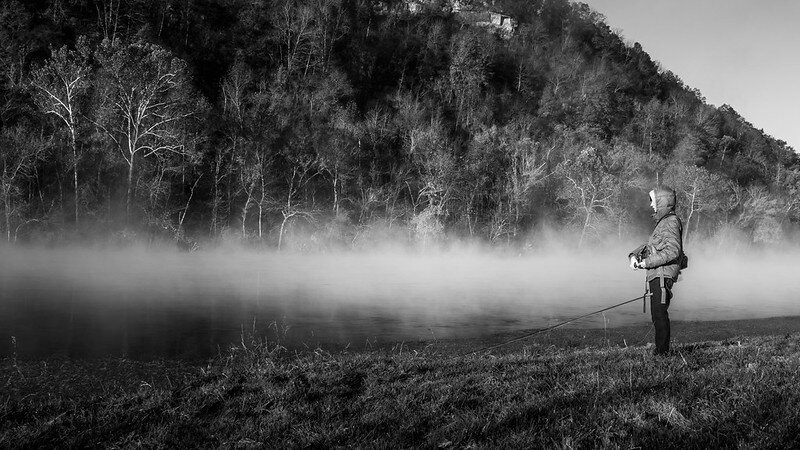The Virtual Retreat: A Liturgy of Silence
Preface: I’m beginning a short book of prose on the topic of silence. For more information, and to subscribe to the project, visit my latest Substack Post.
Virtual Retreat Day 1: A Liturgy of Silence
I was raised in a busy spirituality. We had a pipe organ and horn section in our Sunday service. There was a youth night with chubby-bunny contests, a raucous band, lights, cameras, always action. Everything was amped or next-level or peak. Never was I led into silence or solitude. Never was I told that the Divine Love is a quiet presence, or if I was, there was so much noise that I didn’t hear it.
From a teenage sociological perspective, I suppose this is quite understandable. After all, silence and solitude are, as a practical matter, boring. And what amped teen relishes boredom? Isn’t the next-level spiritual experience supposed to be exciting? Isn’t peak spirituality innately busy, perhaps loud?
In my adult years, I’ve come to believe that dedicated times of silence and solitude open spiritual, psychological, and even creative doors. In my book Coming Clean days, I journaled through the first 90 days of sobriety. In that spit of a season, I sat in the silence of my living room night after night and opened myself to the numinous. In stillness and solitude, I found it easier to organize my thoughts. I wrote in the silence each day, and as I did, my creativity imagination opened. What’s more, I experienced the coming of Divine Love, the presence of the Christ I thought I’d never experience again.
In her article “The Call of Solitude,” Ester Buchholz, who authored a book by the same name, mused on the necessity of silence and solitude in the religious experience. She wrote:
For religion to have its greatest appeal, it must allow time for solitude. The book of Genesis lays this foundation. Within the creation story, God established Saturday, the Shabbat, as a day of rest, set aside from all others. The Shabbat was a time to contemplate one's life and the scriptures. We can do the same, whether we take a day of rest for ourselves, or an hour of quiet prayer, or even a few minutes of meditation. Whether in a remote, faraway stillness or in the very center of a community, the hermit or itinerant monk resides in us all.
How to Incorporate Silence and Solitude Into Your Week
At 5:45 on each Monday morning, I make my way to our local Catholic Church and spend time in the adoration chapel. There, I gather with a small group of regulars whose faces I’ve come to know. We do not say a word, but instead, enter into silence and solitude, faces turned toward the sacramental bread placed on the altar. I sit in a personal pew. Occasionally, I kneel. There, I begin my week in perfect stillness, asking the Divine Love to come, to open my heart and mind for the upcoming week. I pray for friends and family as they come to mind, turn to the Scriptures if one comes blazing into my brain. For the most part, though, I carry no agenda into that hour other than to be still and silent before the God of the universe. Often, it’s the richest hour of my week.
Silence doesn’t happen by accident. It takes liturgical, habituated effort. So today, I’m inviting you to create your own weekly liturgy or ritual of stillness and solitude, even if it’s only an hour. How?
Life Examined: Create a Liturgy of Silence
1. Identify one hour a week where you can practice silence and solitude. I say “practice” because it might not be easy at first.
2. Enter into the time with no expectations (and even more importantly, no cell phone). Consider using a simple prayer to focus your attention. I often enter into silence by repeating the Jesus Prayer—Lord Jesus Christ, Son of the Living God, have mercy on me, a sinner.
3. Bring a journal and a copy of your favorite religious text. Remember, this is not a time for productivity, but when you feel the pull of Divine Love, turn to prayer, journaling, or reading the text. You might be surprised by what comes out.
4. After your hour of silence and solitude, reflect. What did you notice? Was it uncomfortable or peaceful? Were you pulled to distraction, you mind racing? Did it feel like an hour of relief or torture?
5. Commit to practicing this weekly ritual of silence and solitude on the same day for two months. See what happens.
***A Special Invitation***
What to hear more about how you can help bring a book on silence to life? Don’t forget to head to my latest Substack post for more.
THE BOOK OF WAKING UP —a book on addiction, attachment, and the Divine Love—launched TUESDAY so order a copy or ten at Amazon, Barnes & Noble, Bookish (my favorite indie bookseller). Then, forward this post to a friend and ask them to read along.
